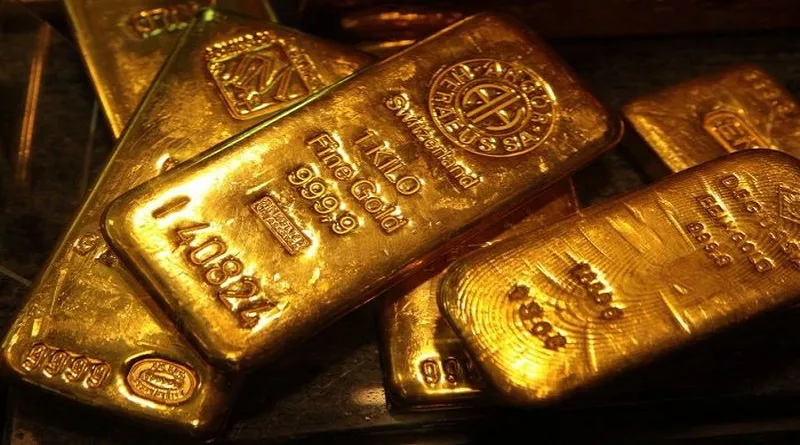Gold has fascinated humanity for millennia, not only for its aesthetic appeal but also for its enduring value as an investment asset. Over time, gold has consistently appreciated in value, making it a popular choice for investors seeking stability and wealth preservation. In this article, we will delve into the various factors that contribute to the increase in the value of gold.
Scarcity and Limited Supply
One of the primary reasons behind the increasing value of gold is its scarcity and limited supply. Unlike fiat currencies that can be printed at will, the global supply of gold is finite. New gold discoveries are rare, and mining operations are expensive and time-consuming. This scarcity makes gold inherently valuable, as the laws of supply and demand come into play. As demand for gold increases, its limited supply leads to upward pressure on its price.
Safe-Haven Asset
Gold has long been regarded as a safe-haven asset, particularly during times of economic uncertainty and geopolitical instability. When traditional investments like stocks and bonds become volatile or risky, investors often turn to gold as a store of value. This flight to safety increases demand for gold and, in turn, drives up its price. The historical performance of gold during economic crises, such as the 2008 financial crisis and the COVID-19 pandemic, reinforces its status as a safe-haven asset.
Currency Hedge
Gold serves as a hedge against currency devaluation and inflation. When the value of a currency erodes due to inflation or economic instability, gold tends to retain its value. Investors buy gold to protect their wealth from the erosive effects of inflation, making it an attractive option when central banks implement expansionary monetary policies. The fear of currency devaluation can drive demand for gold, leading to an increase in its value.
Central Bank Reserves
Central banks around the world hold significant quantities of gold in their reserves. These reserves act as a form of insurance against currency crises and economic downturns. When central banks increase their gold holdings, it signals a lack of confidence in other assets like foreign currencies or government bonds. This vote of confidence in gold can bolster its value and attractiveness to investors.
Jewelry Demand
While not directly related to its investment value, the demand for gold in the jewelry industry also contributes to its increasing worth. Jewelry accounts for a substantial portion of annual gold consumption. Cultural traditions, celebrations, and changing fashion trends influence the demand for gold jewelry. As incomes rise in emerging markets, such as India and China, the demand for gold jewelry is expected to continue growing, providing support to the overall demand for gold.
Industrial Applications
Gold is not only a precious metal but also a versatile one with numerous industrial applications. It is used in electronics, dentistry, and aerospace, among other industries. The demand for gold in these applications can increase its overall value. Technological advancements and the growth of industries that rely on gold can drive up its price as demand for these applications grows.
Geopolitical Tensions
Geopolitical tensions and conflicts can have a significant impact on the price of gold. When international relations deteriorate or conflicts escalate, investors often seek the safety of gold as a hedge against uncertainty. Political instability and the fear of disruption to global markets can drive up demand for gold, leading to an increase in its value.
Monetary Policy
The policies and actions of central banks and governments can influence the value of gold. For example, when central banks implement low-interest-rate policies or engage in quantitative easing to stimulate economic growth, it can lead to concerns about currency devaluation and inflation. In response, investors may allocate more of their portfolios to gold, causing its price to rise.
Speculative Trading
Speculative trading in the gold market can also contribute to price fluctuations. Traders and investors who anticipate future price movements may buy or sell gold contracts on futures exchanges. The collective actions of these market participants can lead to short-term price spikes or declines. While speculative trading can introduce volatility, it often reflects broader economic and geopolitical sentiments.
Investment Vehicles
The development of various investment vehicles, such as gold ETFs (Exchange-Traded Funds) and gold-backed securities, has made it easier for investors to gain exposure to gold without physically owning the metal. These investment options provide liquidity and convenience, attracting a broader range of investors to the gold market. The increased participation of institutional and retail investors can contribute to the long-term appreciation of gold.
Conclusion
Gold’s ability to increase in value over time can be attributed to a combination of factors, including its scarcity, safe-haven status, role as a currency hedge, and demand from various sectors. As long as these factors continue to influence the global economy and financial markets, gold is likely to remain a valuable asset for investors seeking wealth preservation and portfolio diversification. While short-term fluctuations are inevitable, the enduring appeal of gold as a store of value is unlikely to wane, making it a compelling option for those looking to protect and grow their wealth.


